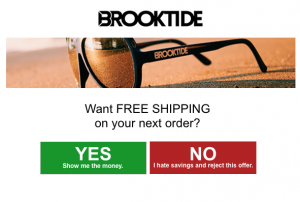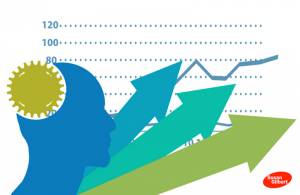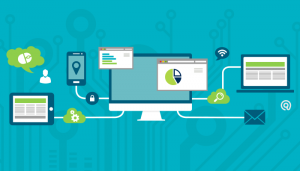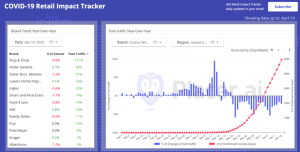— July 4, 2017
To me, circular economy always sounds like an amazing concept, but I have a hard time coming up with ideas of how to contribute. That is why for this week, I have looked for inspiring circular economy examples and I want to share the ones I have found with you. After all, the World Bank predicts that between now and 2025, solid waste will double to 6.5 million tons of solid waste every day. In addition, the OECD estimates that there will be an extra two billion middle-class consumers before 2030. Circular economy needs to explode to the same extent!
First, I will explain how you can make your own business model more circular, so you know how to participate in circular economy yourself. Then, I will list five examples of companies that have embraced circular economy. However, the concept of circular economy does not need companies alone; it also needs the government facilitating these companies. That is why at the end of this blog, you will find ways of how cities have embraced circular economy as well.
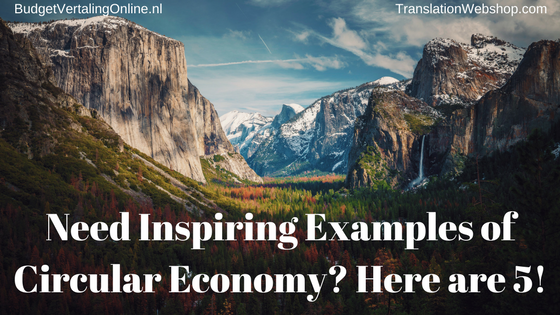
Five ways to make your business model more circular (plus examples)
Lacy, Rosenberg, Drewell, and Rutqvist claim that since the Industrial Revolution, humanity’s use of natural resources has been basically the same: take, make, throw away. Indeed, we have become better at using virgin resources more efficiently while second-hand markets and recycling rates have improved but this has not altered the fundamentals. Many companies’ business models are not set up to do much else than earning money from volume but circular economy thinking — building an economy that does not create waste – can make business-sense.
Product vendors should think of the resources in their products as assets rather than inputs and their customers as users rather than buyers. There are two important challenges:
- how to maximize value along the chain
- how to enable the assets to be continually re-introduced to markets.
There are five fundamental considerations for nearly every sector when thinking about how to make your business model more circular:
- How can we design our products with asset recovery in mind?
- How can we develop product lines to meet demand without wasting assets?
- How can we source material in regenerative loops rather than linear flows?
- How can we develop a revenue model that protects value up and down the chain?
- How can we get our customers to cooperate with us?
Lacy, Rosenberg, Drewell, and Rutqvist have identified five business models that contribute to the concept of circular economy:
1. Products as services
In products as services, goods vendors embrace the idea of themselves as service providers: leasing access to and not selling ownership of a service. In some cases, this has led not only to an effective hedge against cost volatility but also to a stickier customer relationship and increased upsell.
Example: Vodafone’s Red Hot
You can rent the latest phone for a year and keep on exchanging it for a newer version. Assuming Vodafone is engaged in collecting the old phone, not only does this act as material collection and pooling but, from a business standpoint, it also creates deeper customer relationships.
2. Next life sales
Next life materials and products work when a company can efficiently recover and recondition its products after use and then put the same products into the market to earn a second or third income.
Example: Tata Motors Assured
It is more than a second-hand car dealership. Cars are handpicked and refurbished in Tata workshops and then undergo a certification process. Customers are even offered financing options and warranty.
3. Product transformation
Not all products can be reconditioned in their entirety but most products have certain components that carry a high value. Not just products but often materials have an embedded energy component that makes them even move valuable than their virgin source. With the right design and remanufacturing capabilities, they can be put together to form new products.
Example: BMW’s remanufactured parts
For BMW, product transformation can mean a 50% cost saving for customers buying remanufactured parts as compared to new ones. You get exactly the same quality specifications as a new BMW part subject to the same 24-month warranty.
4. Innovation in recycling
Innovation in recycling technology is rapidly evolving and enabling the production of high-quality products with fantastic sustainability performance.
Example: Starbucks’s recycling of waste coffee grounds
Starbuck aims to turn thousands of tons of its waste coffee grounds and food into everyday products by using bacteria to generate succinic acid, which can then be used in a range of products from detergents to bio-plastics and medicines.
5. Collaborative consumption
Lastly, social media exchange platforms are rapidly transforming industries by collaborative consumption.
Examples: Airbnb and ThredUP
Airbnb matches people seeking vacation rentals with hosts who have space and it now has over 200,000 listings in 26,000 cities. If you need new clothes for your kids, you can use ThredUP to browse like-new clothing at significant reductions from families whose children have outgrown their old clothes.
Five companies leading the circular economy transition
The U.S. Chamber of Commerce Foundation Corporate Citizenship Center has released a new case study report featuring examples of how companies are translating circular economy aspiration into action that drives greater resource productivity improvements, eliminates waste and inefficiency, and contributes to a stronger competitive economy. Jennifer Gerholdt has picked five leading examples:
1. Dow Chemical Company
Projections show that between rapid population growth and urbanization, it is expected 70% or about 2.5 billion more people will be living in cities by 2050. Having so many people in highly concentrated environments can cause the temperature of cities to rise, which is known as the “urban heat island effect.” This increases energy demand and cost, greenhouse gas emissions, and pollution.
The Dow Chemical Company is collaborating with governments, associations, and NGOs around a key solution: roof cooling. These are roofs with high solar reflectance. Existing roofs are retrofitted by utilizing a thick, white, monolithic solar reflective elastomeric coating that is applied over flat and slow slope roofs. Dow’s CENTURION™ roof binder helps improve the cool roof’s performance while extending the life of the roof and reducing energy use.
2. DSM-Niaga
In the U.S., more than 4 billion pounds of carpet is landfilled every year, making it one of the most common products in landfills today. DSM-Niaga is a joint venture that is producing the world’s first and only fully recyclable carpet.
The Niaga® Technology for carpet production is based on using a simple set of clean processes, ingredients, and materials that make the product 100% recyclable. This includes not using latex as an adhesive in the manufacturing process.
After the carpet is used, it is sold back to the manufacturer and turned into new carpet. The name “Niaga” means “Again” spelled backward as in true circular fashion, it can be used again and again and again.
3. Enerkem
Cities and communities are already struggling with how to manage their waste. Enerkem uses municipal solid and non-recyclable waste as a feedstock to manufacture biofuels and renewable chemical products.
Enerkem’s facility in Edmonton, Alberta is the world’s first commercial biorefinery of its kind that will process 100,000 dry tons of sorted municipal solid waste annually to produce a synthetic gas and convert into a low-carbon transportation biofuel, enough for 400,000 cars on a 5% ethanol blend.
Enerkem will help the City of Edmonton increase its recycling diversion rate from around 50% to 90%.
4. Veolia North America
Water scarcity is an urgent, global issue. It affects every continent and more than 2.8 billion people at least one month out of the year. Globally, water demand is projected to exceed supply 40% by 2030.
In the United States, hundreds of communities and businesses are at risk of severe and sudden water shortages, due to lack of supply or contamination. The groundwater aquifer that supplies the Ramapo River Watershed in Rockland County New York is an important source of drinking water for more than 1 million regional residents and was becoming particularly dry during certain months of the year.
Veolia Water Technologies partnered with Rockland County to design, build, and operate the Western Ramapo Advanced Wastewater Treatment Facility, a 1.5M gallon-per-day wastewater reclamation plant to help both replenish the aquifer and keep the Ramapo River and surrounding watershed clean.
Equipped with sequencing batch reactors, the plant extends the typical water aeration process and champions a unique type of microfiltration in which the effluent is treated and fed back into the aquifer, ensuring a healthy and sustainable supply.
5. Walmart
Approximately 30-40% of food in the U.S., or 36 million tons worth $ 161 billion, goes to waste annually, much going to landfills with no beneficial resource recovered. Through Walmart’s food donation program, food banks pick up unsold food from Walmart stores, Sam’s Clubs and distribution centers, and provide that food to people who need it. Since 2005, Walmart, the company everybody loves to hate, has donated 3.3 billion pounds of food, including more than 600 million pounds in FY17.
Regarding inedible food, Walmart has launched an organics program in 2009, which is currently comprised of 78 haulers and 352 outlets to recycle food waste for animal feed, anaerobic digestion, and commercial composting. Since inception, the organics program has recycled the equivalent of more than 25,000 semi-truck loads of inedible food.
Cities promoting a circular economy
According to Eetu Helminen, cities around the world promoting a circular economy have three common goals: reduce waste, control climate change, and use resources more efficiently. Some cities also see circular economy as a way to improve residents’ quality of life and create new business opportunities. Key to cities contributing to circular economy is collaboration.
Vancouver
In Vancouver, recycling has been a part of everyday life since the 1970s. However, Vancouver has focused on circular economy just recently, aiming to be zero-waste by the end of 2040. In addition, the city approved the Greenest City 2020 Action Plan in 2010 with an objective to be the greenest city in the world by 2020. I have visited Vancouver in May and, being from The Netherlands, I saw such a big difference in how aware everybody is of the merits of recycling. I loved it!
“From the Vancouver perspective, the reasons for concentrating on circular economy are to reduce the cost of operations in waste management and to reduce the need to purchase more land and move garbage. There are clear savings to be achieved. Another reason is that we know that seven percent of our greenhouse gases come from solid waste. This is a great opportunity to reduce our emissions. These are also tremendous business opportunities,” says Bryan Buggey, who is responsible for economic and business development at the City of Vancouver’s Economic Commission.
The results are overwhelming. Vancouver, with only 7% of the Canadian population, hosts 30% of Canada’s cleantech sector. Furthermore, green jobs have been growing at a rate of 7.8% over the last 3 years. Today, there are more than 25,000 green & local food jobs within the city and even more at the metropolitan level. Meanwhile, over the past ten years, the local GDP has grown more than 26% while the greenhouse gases have fallen by more than 15%, proving that implementing environmental controls does not damage the local economy.
In addition to different programs, the city can improve residents’ quality of life and enable new business opportunities by regulation. “We started a mandatory organics ban from the landfill recently, which separates food from the garbage. After the mandatory regulation was passed and the program was implemented, 72 percent of the population adopted the practice within four weeks. We are very lucky to have such sustainability-minded citizens. They tell us we cannot be green enough,” Buggey says.
Helsinki
Helsinki sees its current historical urban generation as an excellent opportunity to promote the circular economy in its own operations. For example, due to better planning, the city has been able to save 1.4 million liters of fuel and reduce emissions by more than 3,500 carbon dioxide equivalents in management and utilization of excavated land.
Helsinki also enables, for example, the development of applications to reduce food waste. One of them enables restaurants to sell leftover lunches at reduced prices. Another new application tested in the Kalasatama district enables residents to sell leftover food or ingredients to their neighbors.
“The citizens of Helsinki do much by themselves. A good example of this is the Cleaning Day when the whole city turns to a giant flea market. The residents sell or donate the goods they have no use for any more to other residents. This is a circular economy at its best – and it is fun,” says Marja-Leena Rinkineva, who is the Director for Economic and Business Development in Helsinki.
Experiences in Helsinki prove the change is achieved through multi-party cooperation. Helsinki Metropolitan Smart & Clean Foundation is a five-year change project that was started by the Finnish Innovation Fund Sitra in 2016. It includes cities from the Helsinki metropolitan area, Sitra, twelve leading corporations as well as universities and research institutes. All Smart & Clean partners have committed themselves to making Helsinki Metropolitan the world’s best testbed for smart and clean solutions.
Circular economy
I hope this has inspired you to establish a business model that contributes to circular economy. If you are still struggling with the concept, you can read my blogs ‘The basics of Circular Economy explained for entrepreneurs and CEOs’ and ‘The Difference between Circular Economy and Blue Economy’. Hope that helps!
Business & Finance Articles on Business 2 Community
(55)

